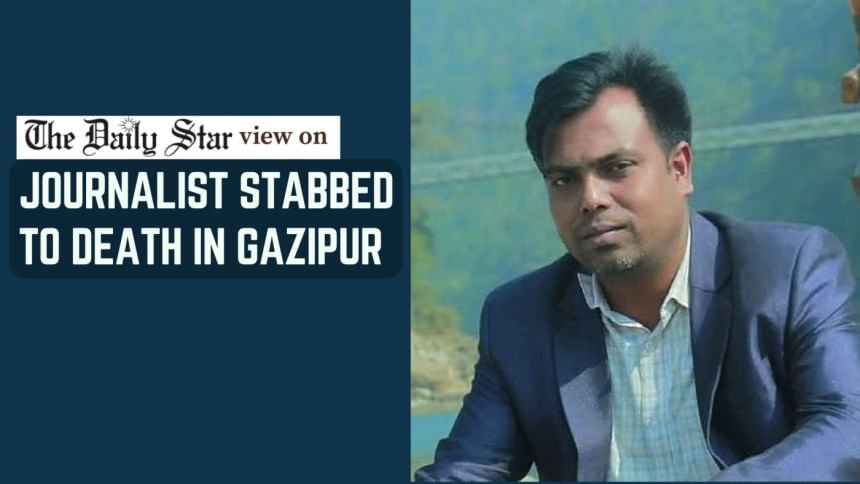We denounce the murder of journalist Asaduzzaman Tuhin by criminals in Gazipur on August 7 and share the concerns raised by the Newspaper Owners’ Association of Bangladesh (NOAB) regarding the safety of journalists and media independence in the nation. Tuhin, a reporter for the Mymensingh-based newspaper, Pratidiner Kagoj, was fatally assaulted at a busy city intersection in full view of the public. This incident occurred a day after another journalist, Anwar Hossain from Bangladesher Alo, was violently attacked in Sahapara, Gazipur.
In both instances, the journalists were carrying out their professional duties. Tuhin was filming armed individuals chasing two people, and Anwar was investigating claims of extortion from auto-rickshaw drivers. These events highlight the escalating unsafe environment for journalists, especially those working outside of Dhaka. Journalists are becoming targets not only for criminal elements and extortionists but also for political activists and sometimes even law enforcement. Just recently, the Committee to Protect Journalists (Asia) urged the government to investigate an assault on a DBC News reporter allegedly by security forces during a protest in Khagrachhari on July 17.
Attacks on journalists extend beyond physical violence. According to a recent report by Transparency International Bangladesh (TIB), between August 2024 and July 2025, 496 journalists faced harassment, 266 were implicated in murder cases related to the July uprising, and three lost their lives while on duty. During this period, eight newspaper editors and 11 news directors from private TV channels were removed, and approximately 150 journalists were fired. The TIB report and speakers at a recent seminar emphasized the issue of “mob” tactics used to intimidate, threaten, and pressure media outlets to alter news narratives if they do not align with certain interests. Additionally, NOAB highlighted a concerning incident where a politically influential figure led a mob to try to displace the owner of Janakantha.
After the end of Sheikh Hasina’s authoritarian rule, hopes were high for a media landscape free from political influence. While direct government interference has diminished, animosity towards the media persists from various quarters. The interim government has yet to take significant actions to safeguard press freedom. Issues such as press accreditation processes, the delayed implementation of the Information Commission, and the lack of progress in amending the Right to Information Act raise doubts about the government’s dedication to nurturing a free media environment. Of particular concern is the government’s failure to enhance law and order. Why is law enforcement inactive when crimes occur openly? With elections looming in six months, it is imperative for the government to act decisively to ensure journalists can work without fear. We call on the authorities to swiftly bring the perpetrators of Tuhin and Anwar’s attacks to justice and advocate for enhanced police surveillance. A society where criminals roam freely, wielding weapons and assaulting individuals in public, is not one where anyone can feel secure.

